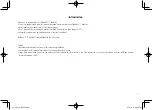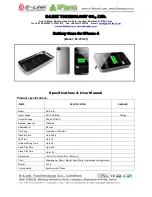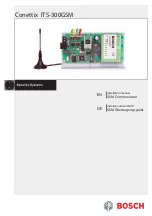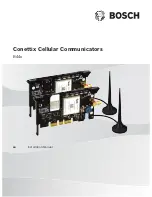
67
Voice/Videophone Calls
d
If a voice or videophone call with a Chaku-moji message arrives
The ringing screen shows the Chaku-moji message. When you answer the call, the message disappears.
d
3D animations are used to display Chaku-moji messages.
d
Chaku-moji messages are shown on the image display when a FOMA
terminal is folded.
d
Displaying Chaku-moji messages in the Received calls record
Chaku-moji messages are stored in the Received calls record.
1
Received calls screen (list) (p.64)
X
Select an entry with “
”
The “Received calls (detail)” screen appears, allowing you to check the Chaku-moji message.
<186/184>
Showing/Hiding Your Caller ID for Individual Calls
If the other party’s phone supports caller ID display, you can show your phone number (caller ID) on
the other party’s phone (display) when making a voice or videophone call. Since your caller ID is
important information, be careful when disclosing it.
d
“PushTalk setting” is available for setting whether to show your caller ID when making PushTalk calls.
→
p.103
NOTE
e
Up to 30 sent messages can be stored in the Sent messages record. If the same message has been sent twice or
more, the latest one is stored. When the number of sent messages exceeds the maximum, they are overwritten
starting with the oldest one.
e
If the callee’s phone is under conditions such as following, Chaku-moji messages cannot be sent, the sending
result message “Transmission failed” appears and no charges apply to the sending.
a
The phone does not support Chaku-moji.
a
“MSG display settings” that hides received Chaku-moji messages is set on the phone.
e
If the callee’s phone is under conditions such as following, Chaku-moji messages cannot be sent, no sending result appears and
no charges apply to the sending. (The messages cannot be logged in the Received calls record on the callee’s phone.)
a
Public mode (Driving mode) is set.
a
0 seconds is set as the ring time for Record message.
a
The phone is out of service area or turned off.
e
Depending on the signal status, no sending result appears even if a Chaku-moji message reaches the callee’s
phone. If this is the case, charges apply to the sending.
e
If “Auto redial as voice” (p.86) is set to “ON” and you cannot make a videophone call with a Chaku-moji message,
the phone automatically redials the call with the message after switching the call mode to voice.
e
If you edit a Chaku-moji message by using “Select message”, the edited message is available only once. The
message is not listed on the “Create message” screen.
e
Chaku-moji messages cannot be sent to phones overseas.
NOTE
e
3D animations may be unavailable for some pictographs.
e
Even if a call with a Chaku-moji message arrives, the message may not appear depending on the status of the
caller’s or callee’s phone. When this happens, the message is not logged in the Received calls record.
e
If you received a call whose ring time is shorter than the time set in “Set mute seconds” in “Ring time(sec.)”, the Chaku-moji
message attached to the call appears. The message logged in the Received calls record and the charges apply to the caller.
NOTE
e
If you use the Received calls record to make a call, the Chaku-moji message stored in the record is not sent.
Function
Description
Refer to
Caller ID Notification
Sets whether to show your caller ID when making a call.
p.50
184/186
Uses the 184 and 186 prefixes to specify whether to show your caller ID every time you make a call.
p.68
Notify Caller ID
Accesses the function menu to specify whether to show your caller ID every time you make a call.
p.68
IchiroDocomo
Example: Voice call
Chaku-moji
Arrived!
Summary of Contents for N903i
Page 208: ......
Page 499: ...497 dIndex Quick Manual Index 498 Quick Manual 506 ...
Page 576: ...Kuten Code List ...
















































